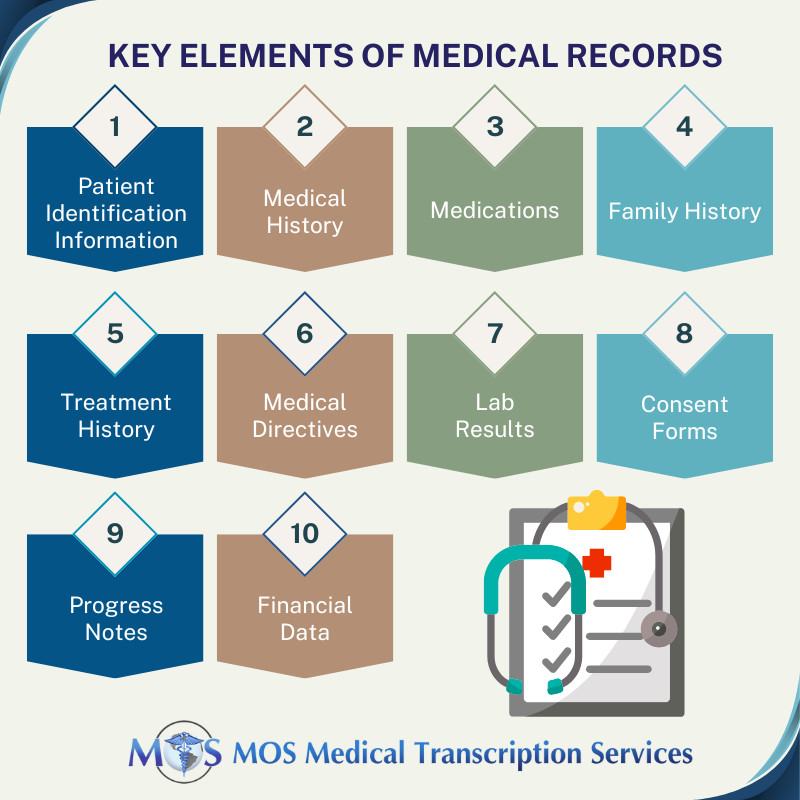
Table of Contents
Electronic health records (EHRs) contain a patient’s health information and aim to ensure that patients receive high quality care. HIPAA-compliant medical transcription services are available that increase documentation efficiency and decrease the time physicians spend on entering data into the medical record. Beyond facilitating optimal healthcare, patient records are also legal documents, and play a key role in medical record review and insurance reimbursement. However, this ultimately depends on having precisely formatted medical notes.
Studies have found that structured and standardized recording improve the quality of notes in the EHR. Clear and properly formatted notes provide physicians with the information they need to make the right decisions about patient care. Structured and standardized documentation drives continuity of care by supporting effective communication between healthcare providers.
How Medical Transcription Formatting impacts Patient Care

Medical transcriptionists ensure that each section of the patient record is properly documented and formatted. For example, when transcribing progress notes, they maintain the required formatting standards:
- Date, time, and author identification
- Chief complaint or reason for visit
- History of present illness
- Review of systems
- Physical exam findings
- Assessment/diagnosis
- Plan of care
- Signatures and credentials
Likewise, transcriptionists are knowledgeable about the medical documentation formatting standards across different settings such as hospitals, outpatient clinics, long-term care facilities, and emergency departments.
Poorly formatted medical records with missing, inaccurate, or non-standard information can lead to Inconsistent care, or affect the quality and safety of care delivered. For example, consider a patient admitted to the emergency department with chest pain. The triage nurse hastily documents the patient’s vital signs and chief complaint, but does not properly organize the information or include important details.
The patient is admitted and entrusted to other providers, but as the documentation is poorly organized, it may fail to convey the patient’s initial presentation, history, and symptoms. This can lead to misunderstanding about the patient’s status and care plan. Without a comprehensive, well-formatted record, the clinicians involved in the patient’s care may overlook important diagnostic clues or make flawed assumptions about the underlying condition. Poor documentation can slow down critical decision-making and treatment, especially in time-sensitive circumstances like a cardiac event.
Additionally, properly formatted medical notes:
- Support accurate claims documentation, billing, and coding for insurance purposes
- Save time on documentation and frees up clinicians’ time for patient care
- Help maintain compliance with health information regulations
- Enable data extraction, analysis and reuse for medical research
- Facilitate tracking of treatment outcomes
- Aid in the development of evidence-based practices
Medical Record Accuracy depends on Precise Formatting
Properly formatted medical records serve as a reliable, comprehensive source of information to support high-quality, coordinated care. Many medical transcription tools features templates and formatting options that comply with industry standards. This ensures correctly structured medical documents that are easier to read and understand.
According to ScribeMD, the following components can enhance medical record accuracy:
Hierarchy: Utilizing headings and subheadings to define sections such as patient history, diagnosis, and treatment plans.
Bullets and Numbering: In lists of symptoms, medications, and other critical data points that require quick reference.
Whitespace: Sufficient spacing between sections to reduce visual clutter and improve readability.
Text Formatting: Bold and italics to highlight critical details or warnings.
Using an AI transcription tool with advanced formatting features ensures that these elements are consistently applied, resulting in standardized real-time documentation. These tools can convert spoken words into text much faster than manual typing, reducing the time required to transcribe medical records. However, when it comes to quality, review by human transcriptionists is crucial. Experienced human transcriptionists can interpret complex medical information, ensuring proper context, and addressing any potential errors or discrepancies that AI may overlook.
Learn more:The Impact of AI on Medical Transcription
A reliable medical transcription company would have a systematic proofreading and editing process in place that covers everything from grammar to medical terminology. Skilled transcriptionists edit the transcripts to ensure consistency and clarity. Their quality assurance process also focuses on ensuring that the documentation is properly formatted and well-organized so that providers have the information they need to make informed clinical decisions about a patient’s care.
Partner with our HIPAA compliant medical transcription company and transform your record-keeping!


